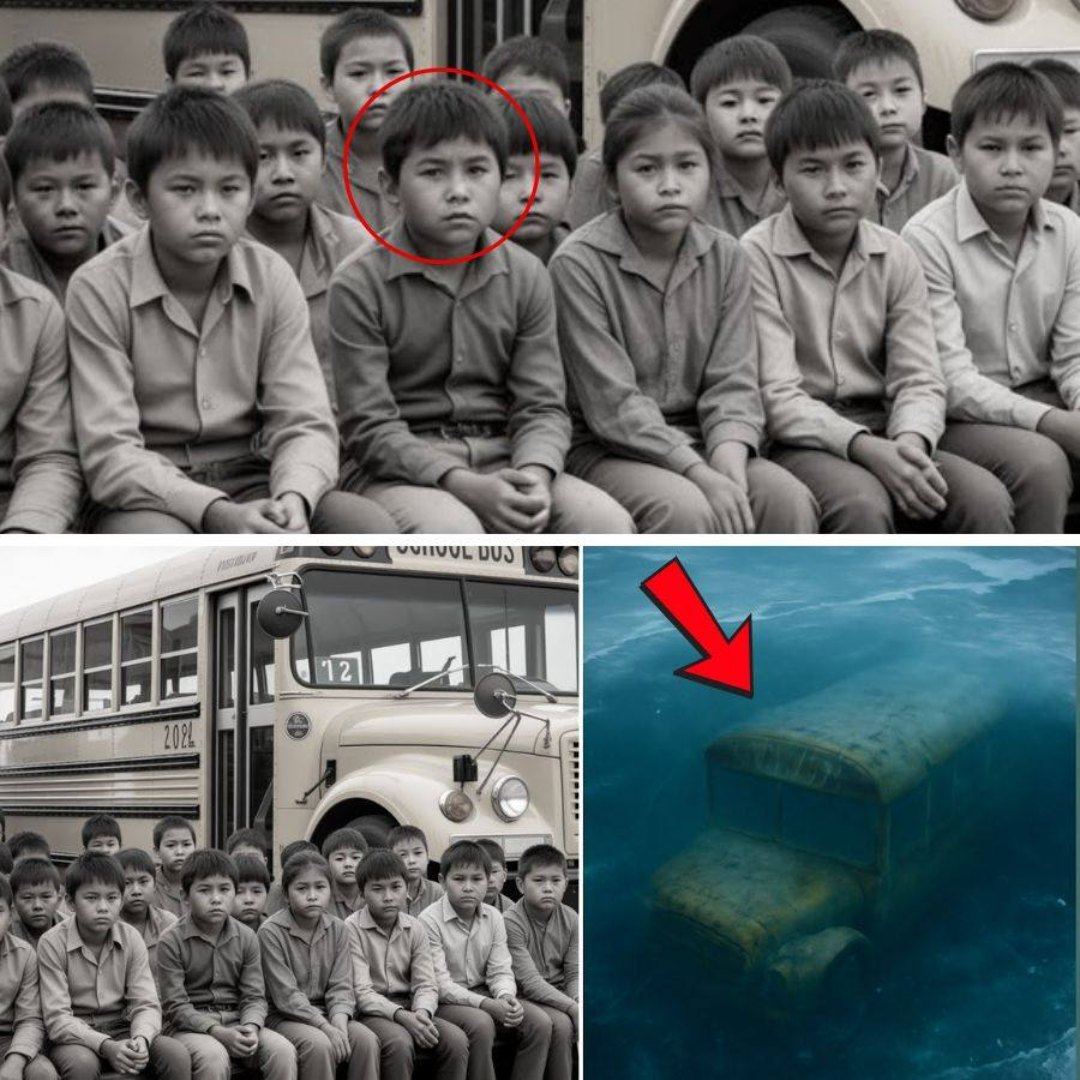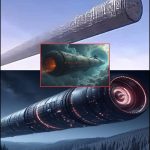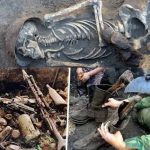The Ghost Bus Beneath Lake Huron: A Secret Frozen in Time

For nearly half a century, the frigid depths of Lake Huron concealed one of the most chilling and little-known mysteries in North American history — a yellow school bus carrying 42 Native American children that vanished in the spring of 1948. No search parties, no newspaper headlines, and no official records ever acknowledged the loss. For decades, it was as if the bus and its passengers had been erased from existence. Then, in 1995, a team of sonar engineers made a startling discovery: a perfectly preserved school bus resting silently on the lakebed, frozen in time.
A Discovery That Reopened Old Wounds

The sonar scans revealed haunting images — the unmistakable outline of a bus, its frame intact, windows unbroken, and seats still in place. When divers descended to the site, they confirmed the unimaginable: the bus’s yellow paint was faintly visible through layers of silt and ice, its metal body preserved by the lake’s cold temperatures. No human remains were ever recovered, deepening the mystery and raising troubling questions.
Forensic experts and historians immediately began investigating how an entire vehicle could disappear without a trace or official record. Archival research yielded nothing — no police reports, no missing persons filings, and no mention in school district archives. The absence of evidence was itself the most disturbing clue.
The Journalist Who Refused to Forget
Enter Nia Whitaker, an investigative journalist of Ojibwe descent whose grandmother once whispered about “the children who never came home.” Her investigation into the Ghost Bus case became a personal mission — one not just of journalism, but of cultural remembrance. Whitaker’s research uncovered suppressed documents, conflicting testimonies, and signs of deliberate obfuscation by local authorities of the time.
Her reporting suggests that the bus may have been transporting Native children forcibly taken from their families — part of the broader system of assimilation-era institutions that sought to erase Indigenous culture and identity. If true, the disappearance represents not just a tragic loss of life but a deliberate act of historical erasure.
The Dark Echo of Assimilation

The Ghost Bus of Lake Huron stands as a haunting metaphor for the broader injustices inflicted upon Indigenous communities in the 19th and 20th centuries. The silence surrounding the event mirrors the systemic suppression of Native voices and the loss of countless children to government-run boarding schools. The physical discovery of the bus serves as both evidence and symbol — a long-buried truth resurfacing from the depths.
Whitaker’s work has reignited discussions about historical accountability, truth-telling, and reconciliation. The story continues to unfold as historians, activists, and divers collaborate to uncover the full truth of what happened in 1948 — a narrative of grief, resilience, and justice still waiting to be written.
Conclusion
The Ghost Bus Beneath Lake Huron is more than a mystery — it is a reckoning with history. What began as a chance sonar discovery became a powerful investigation into memory, silence, and the human capacity to confront buried truths. As the lake continues to guard its secrets, the haunting image of that yellow bus endures — a frozen reminder that some stories, no matter how deeply submerged, refuse to drown.











